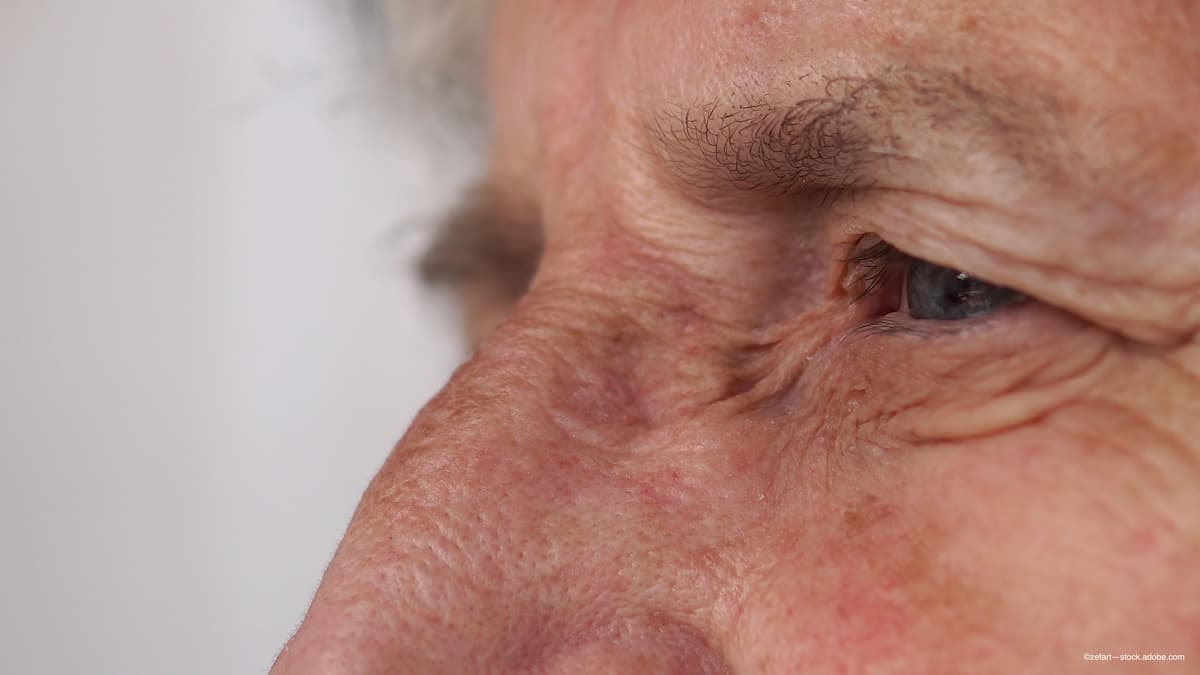Exploring the clinical and humanistic burden of geographic atrophy
During a presentation at the EURETINA 2021 Virtual Congress, Dr Daniel Jones discussed GA and emphasized the need for additional study to gain a better understanding of the burden experienced by patients.

Geographic atrophy (GA) imposes a heavy clinical and humanistic burden on patients with dry age-related macular degeneration (AMD), according to first author Dr Daniel Jones an employee of Apellis Pharmaceuticals.
Jones discussed the topic at the EURETINA 2021 Virtual Congress.
According to Jones, this advanced form of dry AMD, which has the potential to cause irreversible blindness, currently has no approved treatment and clinicians have no ways to prevent or slow progression, estimate the risk, or determine patient prognosis.
The estimated incidence of GA in the US is about 1.9/1000 and in older patients that rate increases to 4.3/1000.
It has been estimated that from 12% to 20% of GA cases end up with severe loss of vision, which severely impacts patients’ ability to care for themselves, perform chores, and navigate successfully outside the home without assistance.
Jones and colleagues undertook a literature review from January 1, 2015, to August 11, 2020, to assess the clinical and humanistic burden of GA already reported. They searched databases (PubMed, Embase, and Cochrane Library) during those dates as well as conference abstracts for 2019 to 2020.
The investigators found that in addition to the 12% to 20% of patients with GA who have severe loss of vision, almost a third of patients lose a minimum of 2 lines of vision during a 2-year period.
Compared with patients without GA, the vision-related function and health-related quality of life are poor in patients with GA, according to Jones.
The investigators noted that the results of the National Eye Institute Visual Function Questionnaire (NEI VFQ-25), a tool that is often used to measure patient quality-of-life parameters, has found that patients with GA have significantly lower NEI VFQ-25 composite scores and lower subscale scores for near activities, distance activities, dependency, driving, social functioning, mental health, role difficulties, color vision, and peripheral vision versus individuals without GA, Jones said.
GA naturally impacts patient independence, and the inability to continue to drive is a particular concern for patients.
It also is associated with increased anxiety and depression, likely because patients lose the ability to take care of themselves and decreased vision prevents them from performing their daily tasks.
An important finding concerns ease of mobility.
“Patients are more likely to experience falls and fractures as a result of their impaired vision;1 study reported that 9% of patients with GA had a fall or fracture during a 12-month period,” Jones explained.
Based on these findings, the investigators concluded that GA imposes significant clinical and humanistic burdens on this patient population and loss of vision has a detrimental effect on many aspects of patients' lives.
The researchers emphasized the need for additional study to gain a better understanding of the GA burden experienced by patients.
